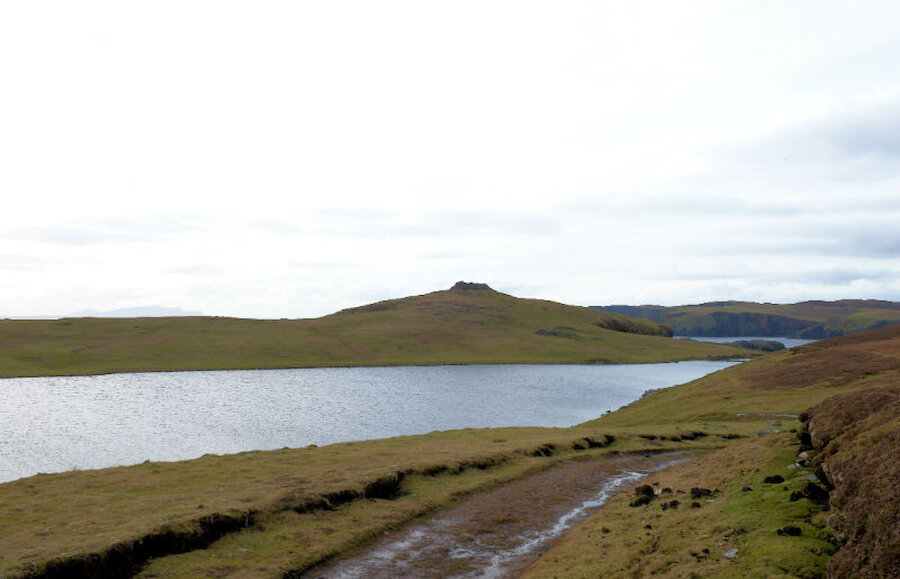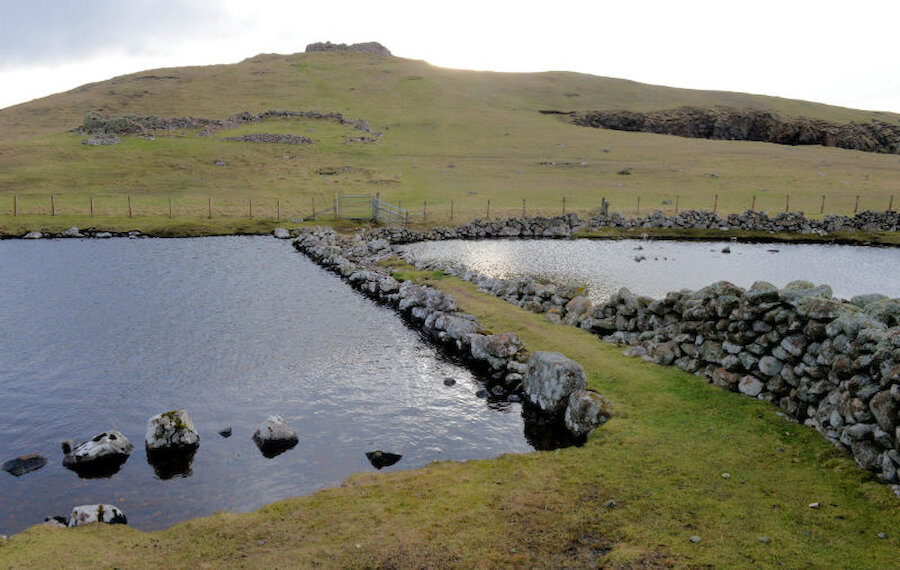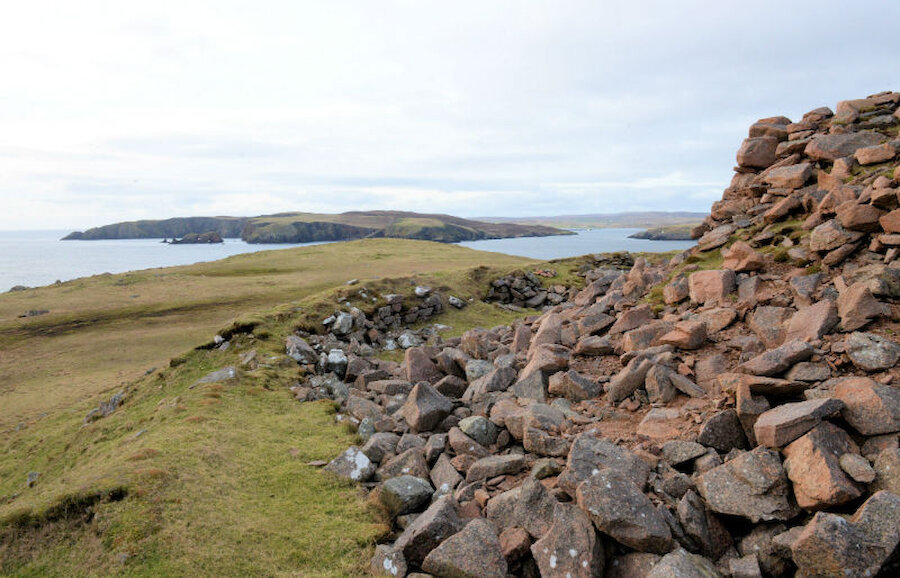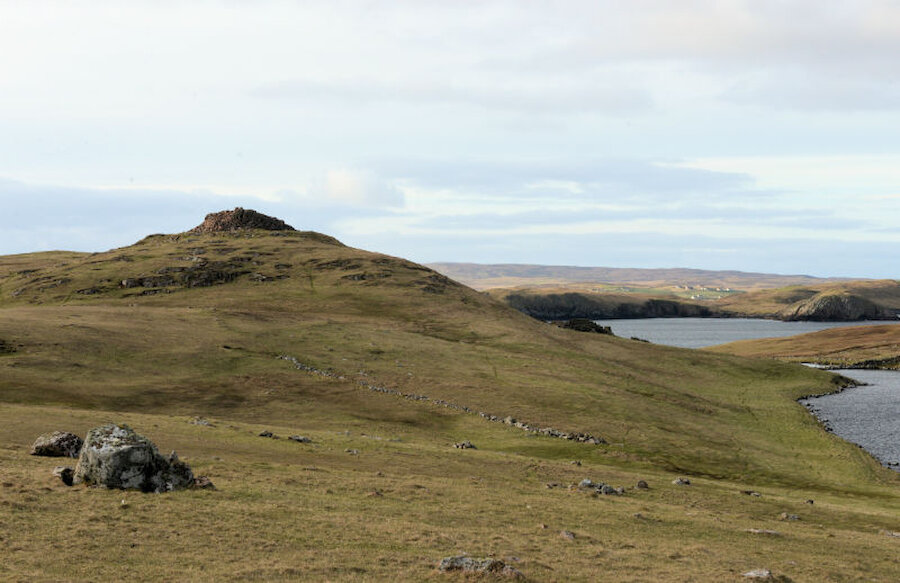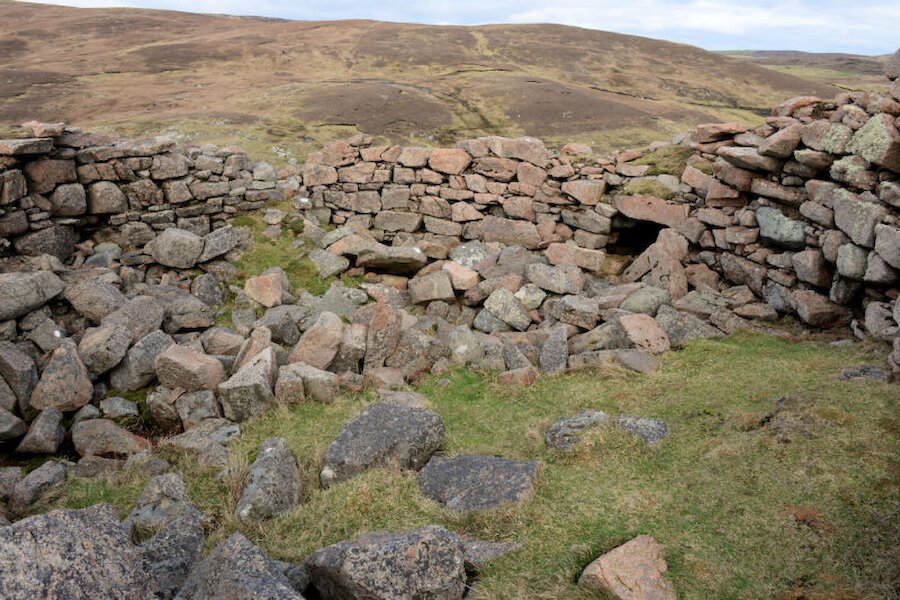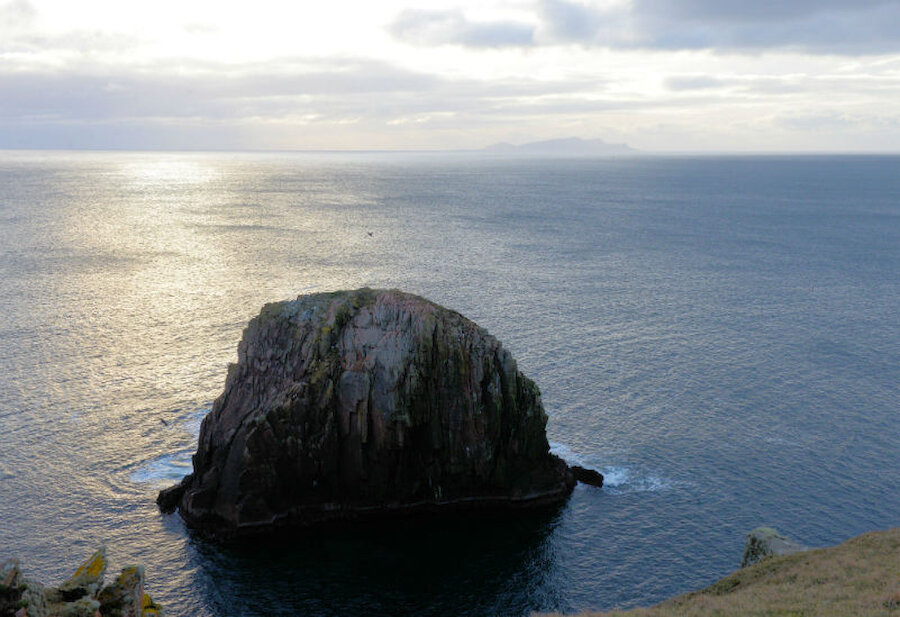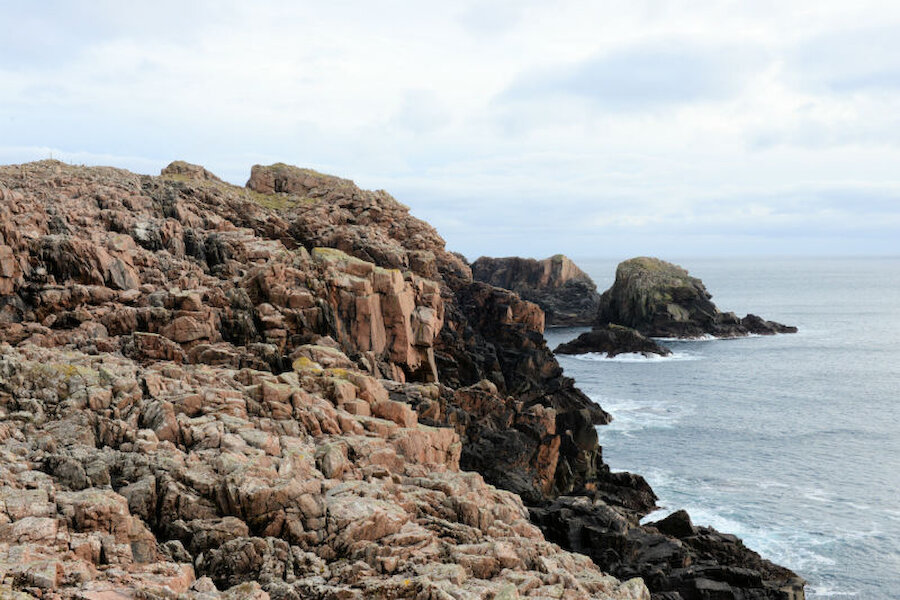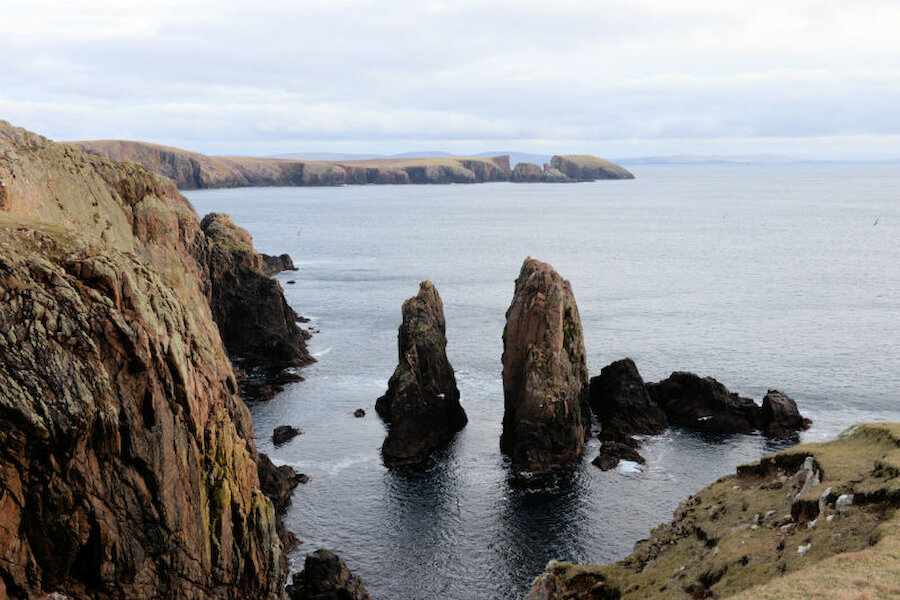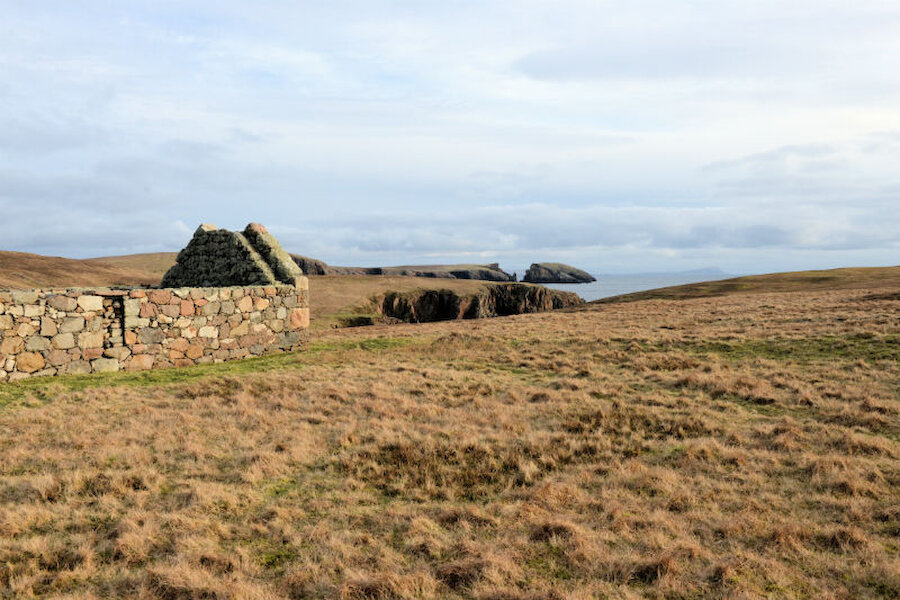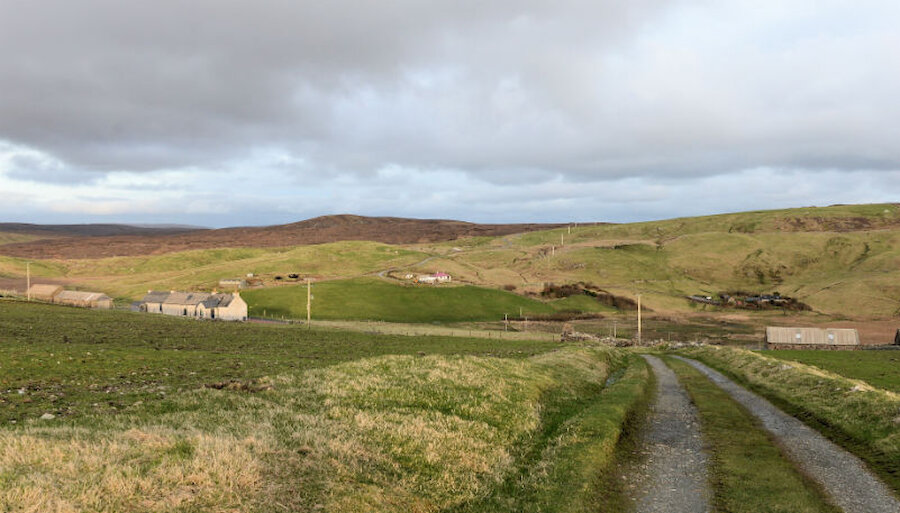Many things combine to make life in Shetland what it is and one of them is the ease with which we can get out into truly wonderful landscapes. Another is the wealth of impressive and intriguing archaeological remains. A walk to Culswick broch, in Shetland’s west mainland, brings these strands together; and so it was that on a bright, dry March afternoon, I decided to get some much-needed exercise and head west to visit the Broch of Culswick.
The starting point, the hamlet of Culswick, is little more than half an hour’s drive from Lerwick. It consists of a handful of houses nestled in a valley in the west mainland of Shetland, usually just known as ‘the westside’. A good track leads most of the way to the broch, skirting the Loch of Sotersta, and the hills provided shelter from a fresh north-easterly breeze.

